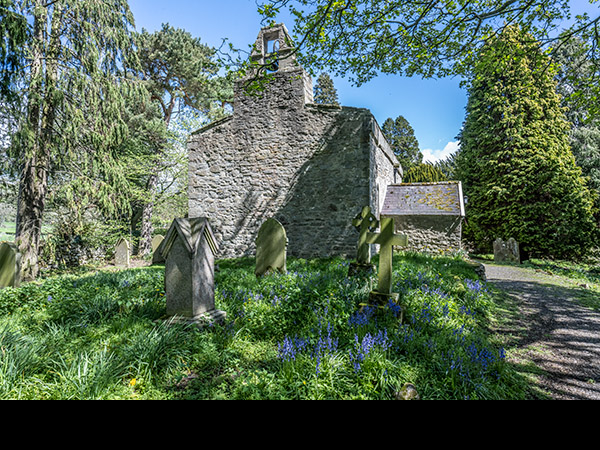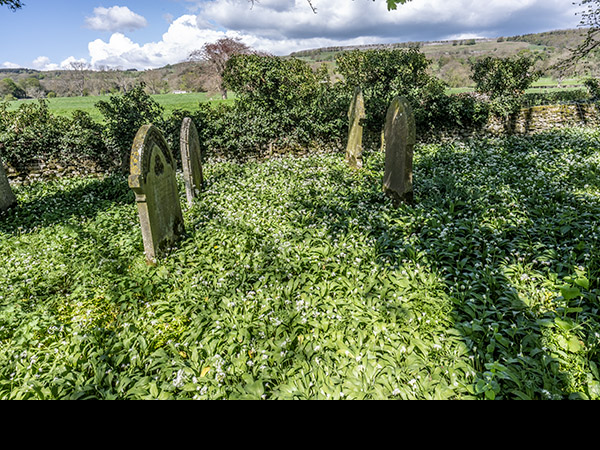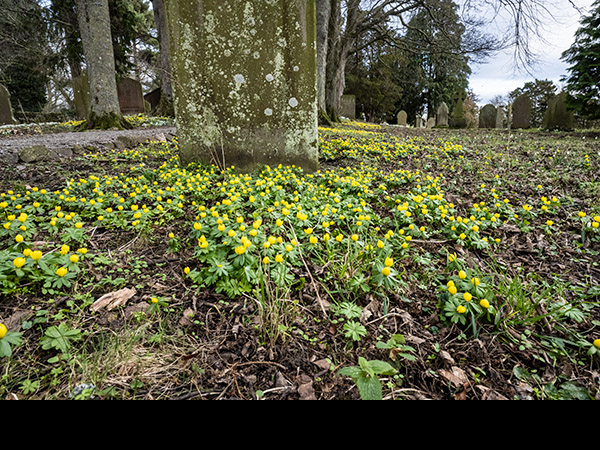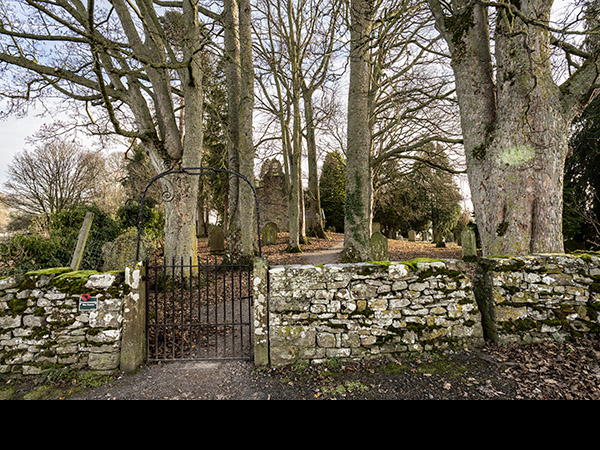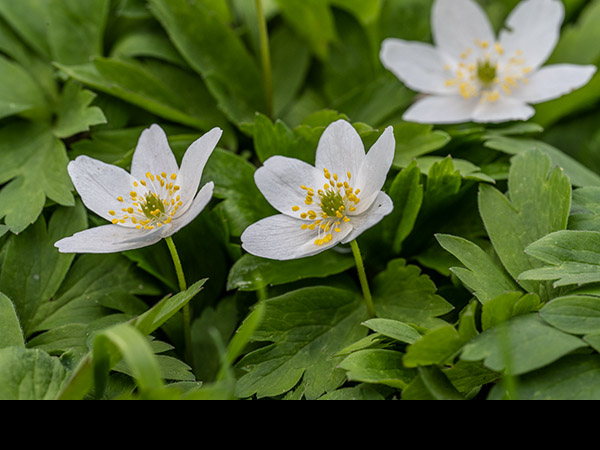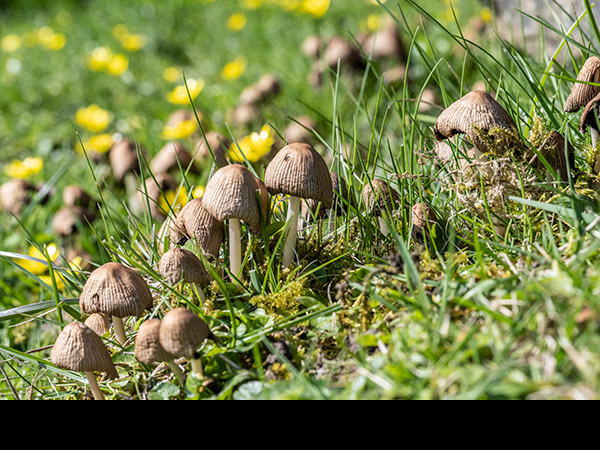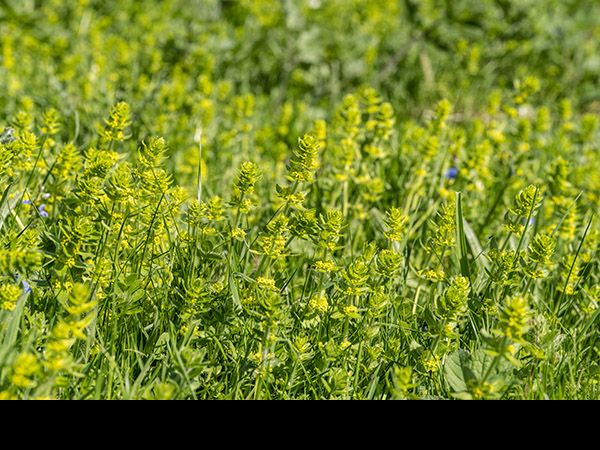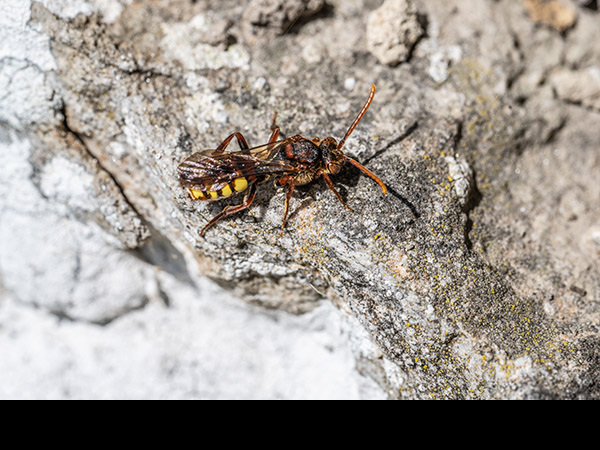Churchyard
St Mary’s, Redmire
The churchyard is currently maintained with nature conservation in mind. Being relatively undisturbed and presenting a variety of habitats, the churchyard is rich in species. It consists of areas of shady semi-woodland and sunny grassland areas. The wooded areas are particularly rich in spring flowers. Headstones, being made from various rock types, present many opportunities for lichens, many of which are specific to certain types of geology.
Slide 1: Wooded area of churchyard in spring, with Bluebell, Hyacinthoides non-scripta, under trees. May.
Slide 2: Wooded area of churchyard, looking towards Redmire Scar. Ground cover of Ramsons, or Wild Garlic, Allium ursinum. May
Slide 3: Wooded area of churchyard in winter. Ground cover of Winter Aconites, Eranthis hyemalis. February
Slide 4: Entrance to churchyard in winter, with moss and lichen covered drystone wall. December.
Slide 5: Wood Anemone, Anemone nemorosa, under trees. April.
Slide 6: Toadstool growth in sunny, grassy area of churchyard. Glistening Inkcap, Coprinellus micaceus. April.
Slide 7: Lady's Bedstraw, Galium verum, growing in grass sward in a sunny area of the churchyard. May.
Slide 8: A solitary bee, Nomada panzeri, on a sunny south facing churchyard wall. May.
Headstone
Below is a sample sandstone headstone, dated 1884, showing the west facing surface with its cover of lichens. The two dominant species are Pertusaria aspergilla and Acarospora fuscata.
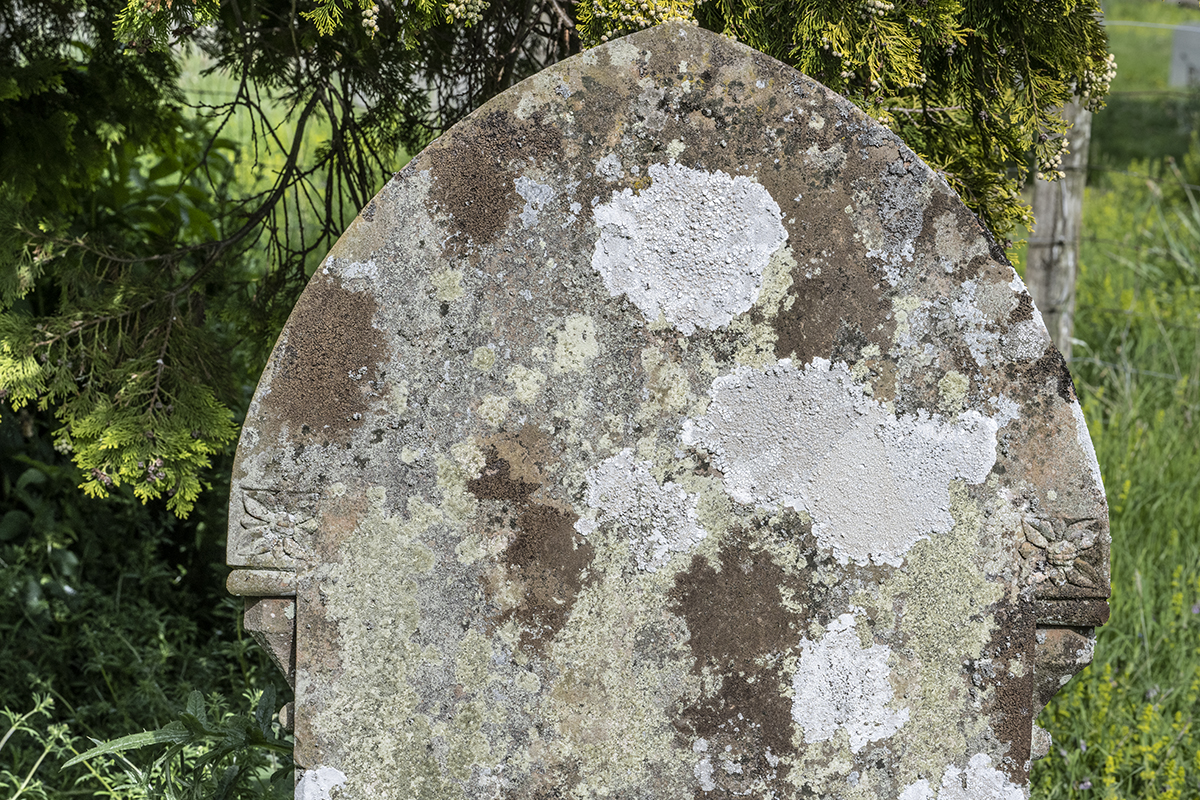
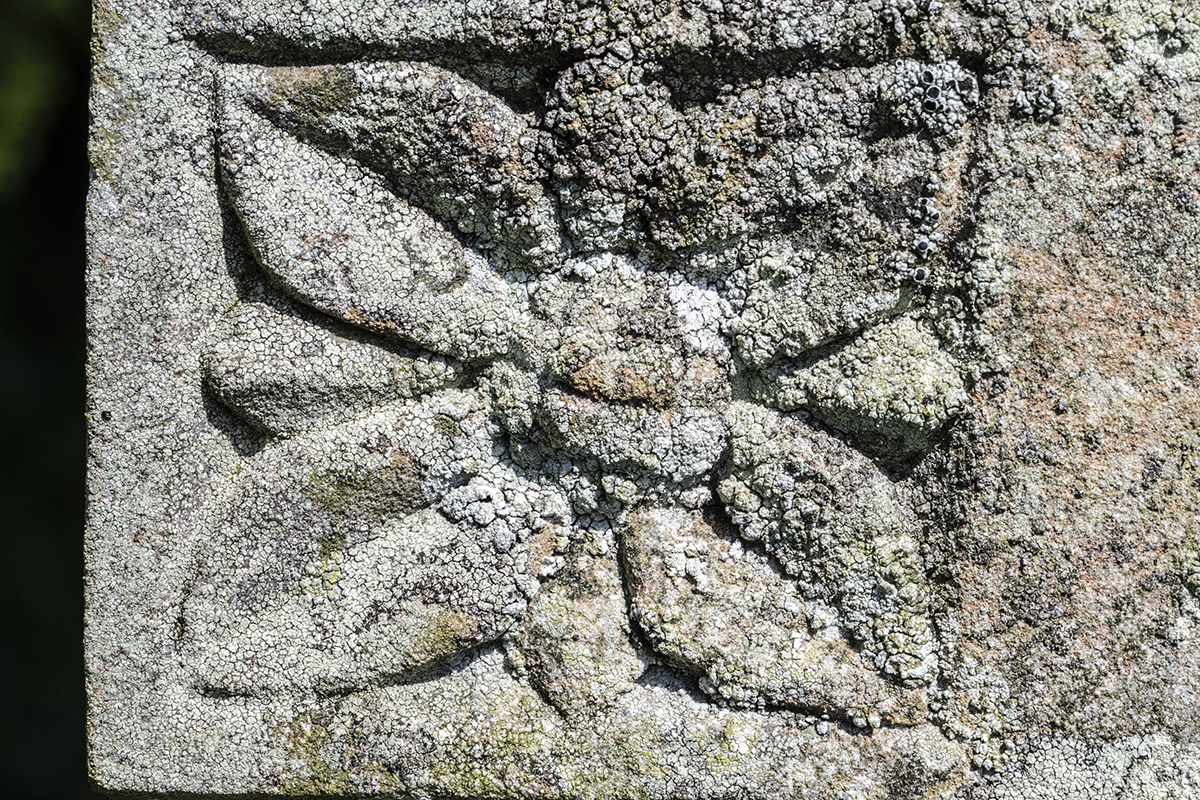
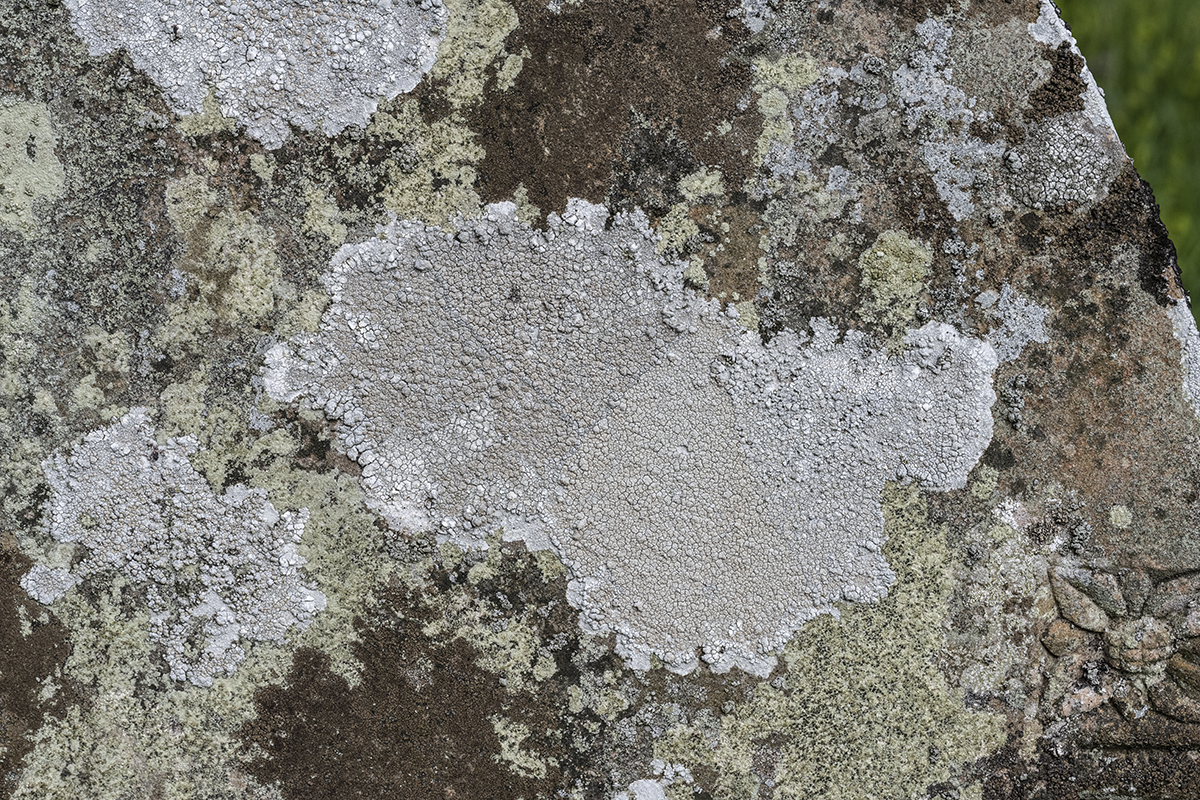
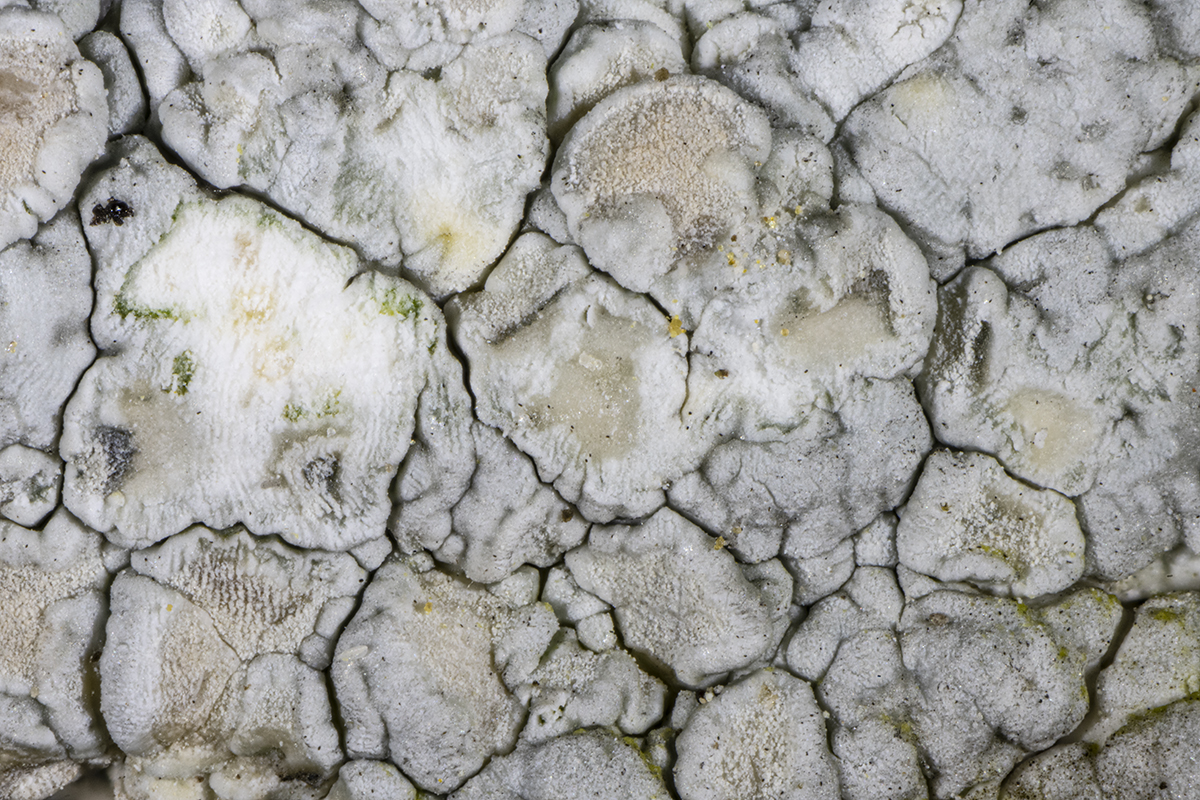
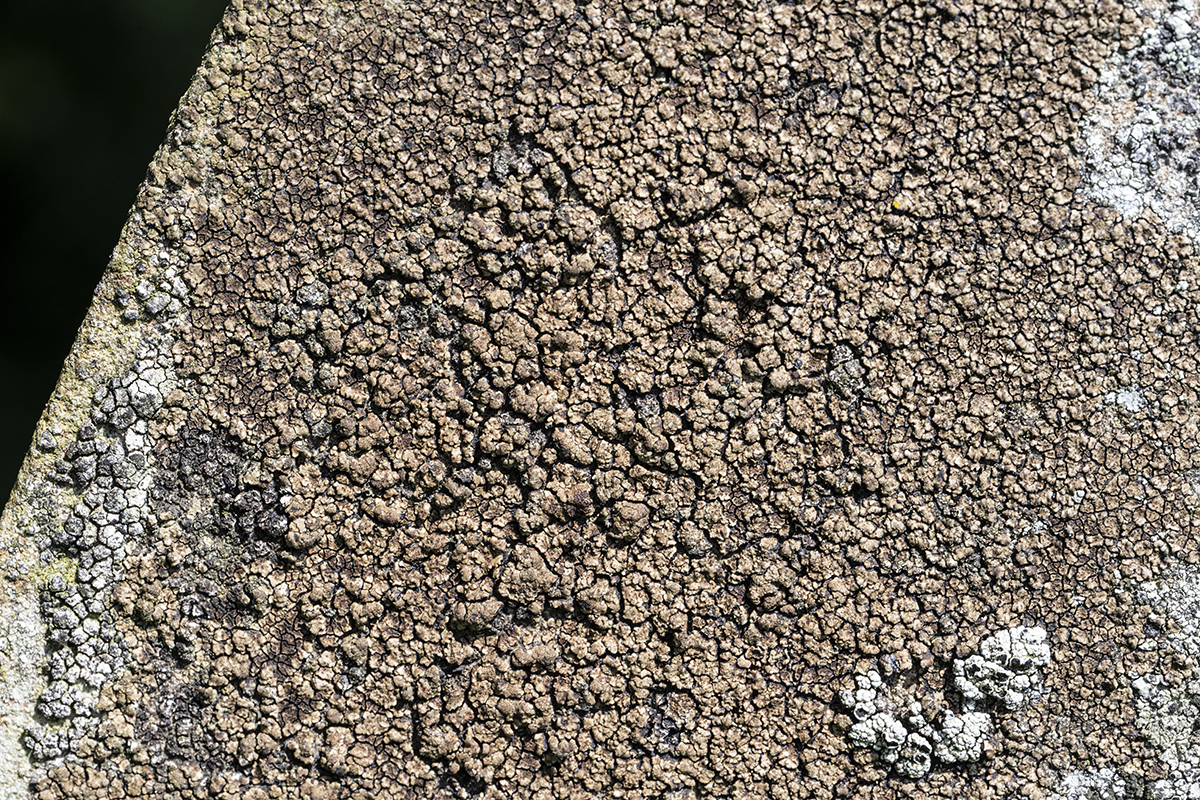
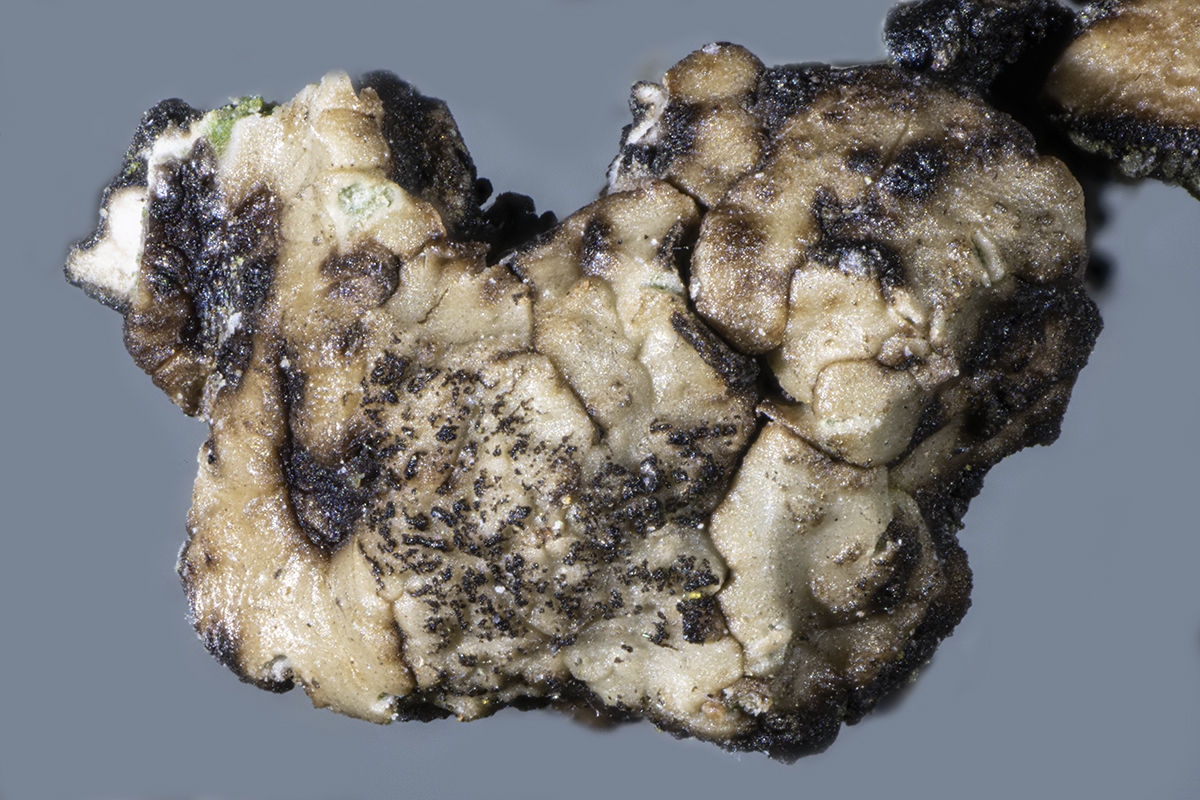
..
